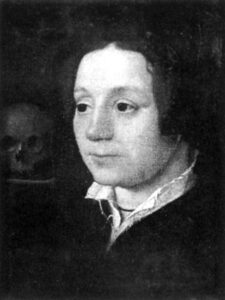
Today’s episode of BBC Radio 4’s Book of the Week, featuring “Elizabeth’s Women” by Tracy Borman, is about the two women that brought Elizabeth up – Katherine Ashley and Katherine Parr (Catherine Parr).
In 1549, Elizabeth quoted the following words from St Gregory in a letter to Edward Seymour, Lord Protector of England:
“We are more bound to them that bringeth us up well, than to our parents, for our parents do that which is natural for them, that is bringeth us into the world, but our bringers up are a cause to make us live well in it.”
Kat Ashley
Her words refer to her governess, Kat Ashley, who was called Katherine Champernowne before her marriage to John Ashley, a cousin of Anne Boleyn. Kat joined Elizabeth’s household in late 1536 and eventually became Elizabeth’s governess and close friend.
Kat Ashley was the closest thing to a mother that Elizabeth had experienced since her Anne Boleyn’s execution in 1536. Borman writes of how Kat’s intellect and her sense of fun appealed to the young Elizabeth and that she was an instant hit. Borman points out that Kat’s influence at an early stage of Elizabeth’s life must have had an effect on Elizabeth’s intellectual, spiritual and emotional development. However, although she was a very intelligent woman, and is credited with educating Elizabeth in the field of languages, mathematics, astronomy, geography and history, Borman makes the point that Kat’s naivety, her impulsive nature and overly romantic outlook did not make her the best role model for a young princess, but then all of the focus was on the young Edward VI, heir to the throne.
Katherine Parr
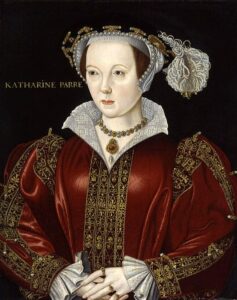
Borman explains how Katherine Parr came from a long line of enlightened and dominant women, and she was no exception. She quickly recognised Elizabeth’s intelligence, which overshadowed her brother Edward’s, and assigned the princess her own personal tutor. Not only did she provide a top class education for Elizabeth, she also provided her with a strong role model, a model of what a woman could do and be, even in the Tudor World!
When Henry VIII left his wife as Regent while he was in France, Elizabeth saw her stepmother take on a country that was ravaged with disease, religious division and war, and rule it successfully. She saw Katherine in control and men bowing to her, and this clashed with what the young princess had been taught about women being the weaker sense and being incapable of ruling a country. Surely seeing Katherine as Queen in this way must have helped shape Elizabeth’s own future as queen.
The Two Katherines, A Lustful Man and A Teenage Princess
Kat Ashley had once been naive enough to believe that Henry VIII wanted to give Elizabeth in marriage to Thomas Seymour, and to encourage this idea, but she was shocked by Thomas Seymour’s behaviour with the teenage princess when Elizabeth was living under his roof.
Katherine Parr married her former love, Thomas Seymour, within three months of Henry VIII’s death and took Elizabeth to live with her and her new beau. It seems that Seymour found Elizabeth irresistible and that Elizabeth was infatuated with him, blushing when his name was mentioned, but by any standards his behaviour was inappropriate. Kat Ashley made the mistake of ignoring his morning visits to Elizabeth’s bed chamber, while she was still in bed, and Borman points out that Kat realised too late the effect that this would have on Elizabeth and her reputation. The visits became a daily habit and soon Seymour was visiting in only his nightshirt and tickling the princess. Kat reprimanded Seymour and eventually reported his behaviour to Katherine Parr.
As I have written before, Katherine Parr’s behaviour over her husband’s infatuation with Elizabeth and his rather inappropriate visits to her bedchamber, is hard to understand, but Tracy Borman wonders if the pregnant Katherine thought that the best cure for her husband’s lust was to give him just enough of a taste of Elizabeth’s “charms” without things getting out of hand and she even began to join in “the fun”, perhaps in an attempt to keep an eye on things. How wrong and how irresponsible! Katherine soon realised her error when Seymour and Elizabeth were found alone, with Elizabeth in Seymour’s arms. It is at this point that Katherine sent Elizabeth away. We can only imagine Katherine’s shock, her sense of betrayal and her worries over the reputation of the princess who was in her care. Kat Ashley must also have been affected by this scandal as surely she had failed in her duty of care for Elizabeth.
The good thing about Katherine’s outrage and her “banishment” of Elizabeth is that it did seem to bring Elizabeth to her senses and Borman writes of how Elizabeth resolved never to be so reckless again, after all, this behaviour had led to rumours of Seymour deflowering the princess and even of Elizabeth being pregnant. We know that Elizabeth always guarded her reputation fiercely and the Seymour scandal, along with all the scandal surrounding her mother’s fall, must have made Elizabeth realsie how careful she had to be with her behaviour.
Not long after the Elizabeth and Seymour scandal, Katherine Parr gave birth to a daughter, Mary, but died of puerperal fever just a few days later. What I did not know was that in her feverish state, Katherine ranted against her husband, accusing him of not caring for her properly and not loving her. His betrayal had obviously hit Katherine hard and her true feelings were gushing out in her fever. Although Elizabeth’s reaction to the news of her stepmother’s death is not known, what is known is that she became very seriously ill shortly after and Borman wonders if this illness was caused by grief and guilt at causing her stepmother such suffering and betraying her. Katherine meant a great deal to Elizabeth, we know this from letters that Elizabeth sent to Katherine where she professed her affection and esteem, so to know that she was part of the cause of Katherine’s suffering must have been a very heavy burden for Elizabeth to bear.
So, these two Katherines both had their role to play in the shaping of this monarch and, although they made some mistakes, it looks like they did a pretty good job. They loved Elizabeth like a daughter and gave her the tools she needed to make her own way in the world, and what a successful way it was.
You can find out more about Katherine Parr in my article – Catherine Parr and Elizabeth.
Catch Episode 3 of BBC Radio 4’s “Book of the Week” featuring “Elizabeth’s Women” at 9.45am (GMT) tomorrow or on BBC iPlayer. Episode 3 focuses on Elizabeth’s ladies-in-waiting.

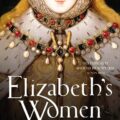
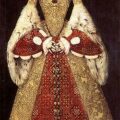


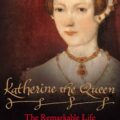



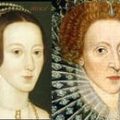
Katherine Parr was not necessarily aware of her husband’s intentions toward Elizabeth when she was joining in the fun; historian Alison Weir wrote in The Six Wives of Henry VIII that in order to protect himself, Thomas Seymour told K. Parr about his visits to Elizabeth’s room as though they were innocent fun with someone he viewed as a young girl and a daughter (which, Weir asserts, is how Parr still viewed the young Elizabeth). It is an interesting but certainly unconfirmed idea that Parr was aware of the scandalous nature of these encounters while participating to her degree.